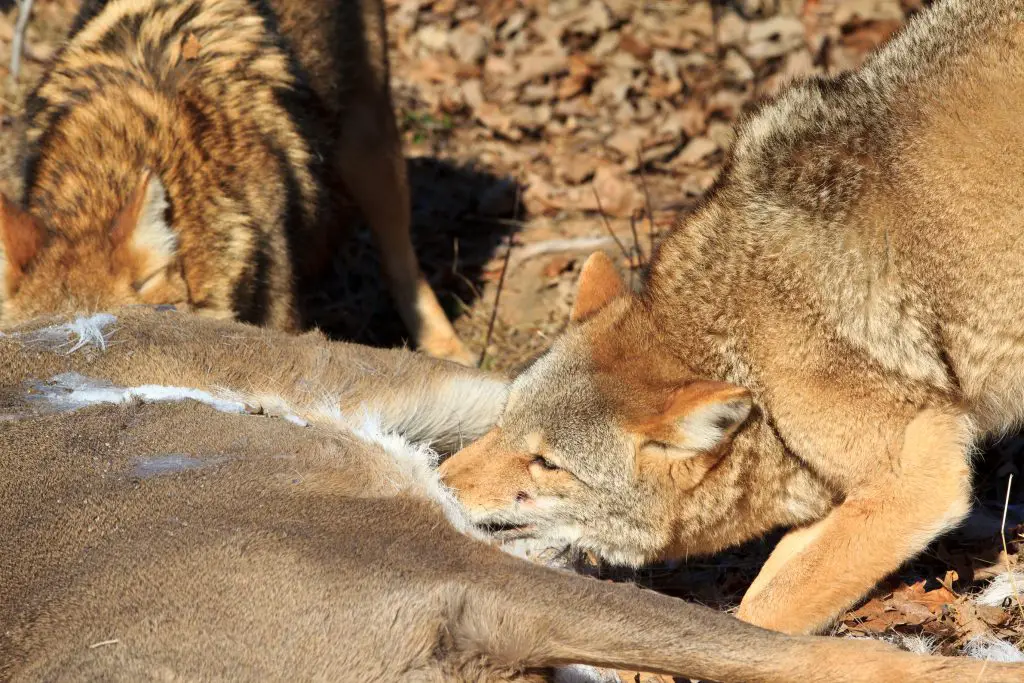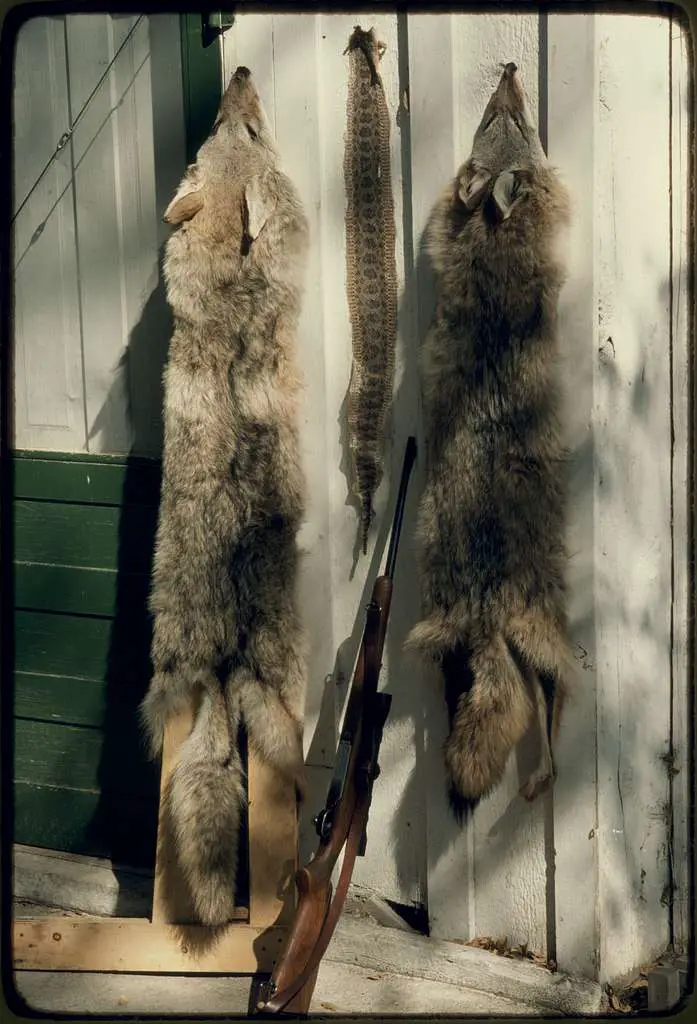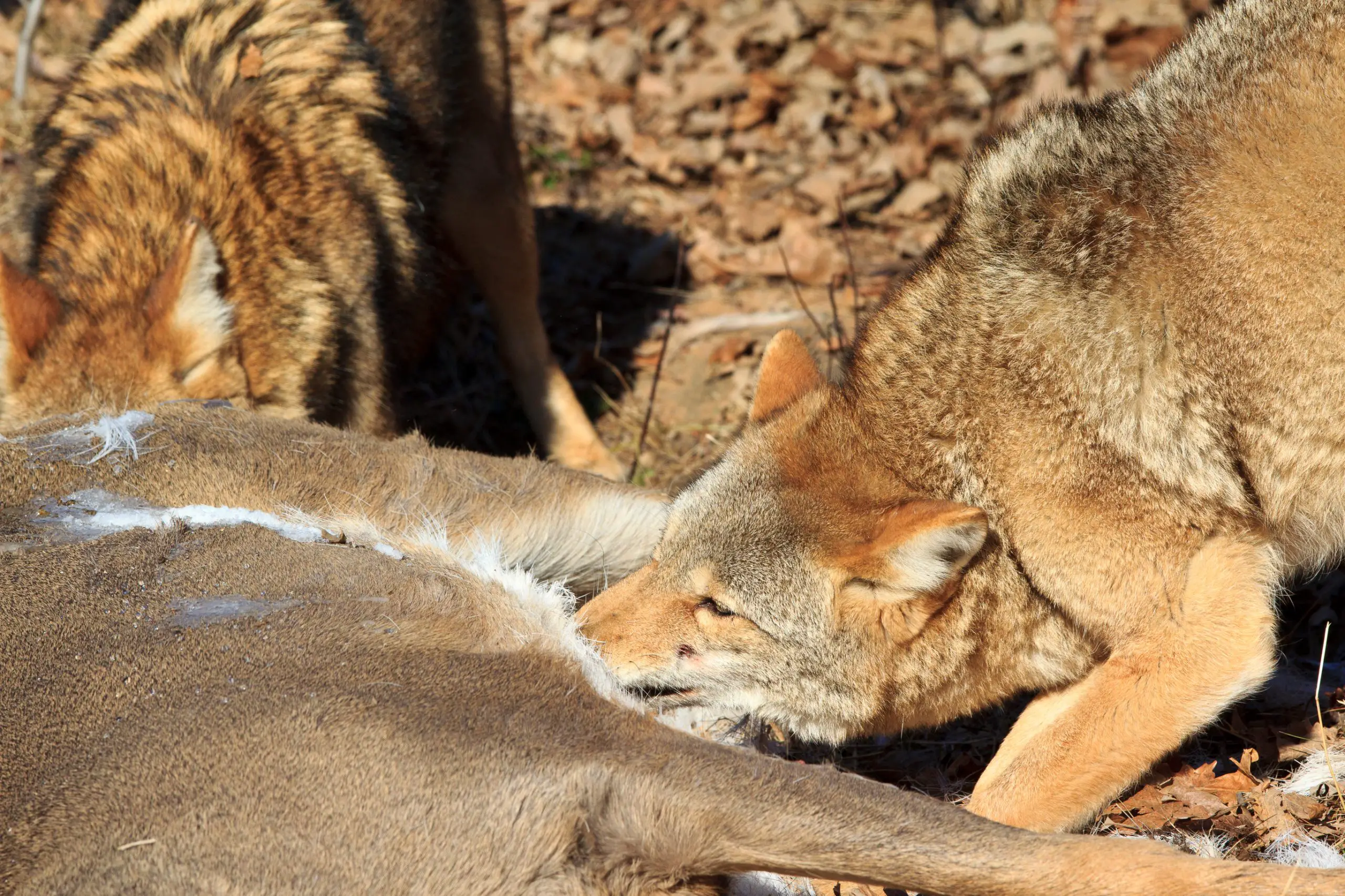Last Updated on May 13, 2023 by Dwayne Easton
Coyotes are small, weighing around 40 lbs “18 kg”, smaller than the dogs and wolves. They are tawny brown in coloration. Coyotes seem to be nocturnal. Although it is possible to see them during the day, they are much more often seen at night. After hundreds of thousands of dollars spent on research. It’s been proven that coyotes have a negative impact on wildlife. Research has also shown that removing coyotes, especially certain times of the year. It has a dramatic and quick result, fawn survival rates improve, even doubling in several scientific studies. It’s true that coyotes can affect deer populations. Various studies show coyote predation accounts for anywhere from 37% to 80% of fawn mortality.

White-tailed Deer fawns are born April through July, the majority of fawns born in June. Until they are strong enough to keep up with their mothers, deer fawns are left alone while their mothers go off to feed. … Mother deer will stay away from the fawns to avoid leading predators to their young. For many deer hunters, the less coyotes around the better as the deer populating in the area will be greater. this begs the question, if you see a coyote while in your tree stand or sat in your blind hunting deer what do you do.
leafs crunch,twigs snaps. You can hear movement. Something approaches. A deer? Nope, just a coyote. For many hunters, the immediate next step is to reach for the gun or crossbow. But is that such a good idea.
The first issue when shooting a coyote mid deer hunt is the impact of the shot itself. There’s the real risk of alerting nearby deer. And after the shot, the coyote might yelp, bark, or race off into the brush, creating even more commotion. If you are going to take that shot, you better be confident there are no deer nearby. Also if a deer passes through and sees a dead coyote or crosses a blood trail, there’s no doubt it will catch their attention. Maybe they will be curious and come closer, but they also might spook at the strong scent of a predator. Although coyotes live in family groups, they usually travel and hunt alone or in loose pairs. In this way they are different from wolves. Which sometimes leads to the impression that coyotes do not form packs since they are usually seen alone.
For the hunter who is only hunting coyotes what you should do with dead ones i think it depends on how many you kill a year. If you kill 10+ its probably worth your time to skining, flesh and dry them out. Bundle them up, and send them to an auction and get something for your time. If your only getting a handful . Then you still may want to flesh them up and send off to be tanned and hung or mounted like any other trophy you’d keep.

Can I Kill a Coyote?
The answer to the question, can i kill a coyote is YES. Winter is time to hunt the hunter. put your warm boots on and grab your rifle. Coyotes are out there waiting in a habitat near you. The best bet for finding coyotes is to look for them where their wild prey (small game, birds, mice, etc.) live. Fields, brushy creeks, riverbeds, and light forests are all good places to hunt.
It’s important to be as quiet as possible on your hunt. You’ll want to find a well-hidden position where you can comfortably remain still. Ideal shooting positions offer good cover And stay on the lookout for upwards of half an hour at a time. As with most types of hunting, coyote hunting is a waiting game. Take binoculars and a rangefinder. Be patient – coyotes are unlikely to show themselves immediately. If nothing presents itself after about 15 minutes, use a call and even take decoys. if you are out right up until dusk make sure you take your hunting flashlight and spare batteries . Also take the right warm gear and equipment as the temperatures will drop as soon as its dark.
What Animals Kill Coyotes?
Common predators that kill coyotes include mountain lions, wolves, Bears,and other coyotes. eagles are also opportunistic predators against coyote pups. The mountain lion is one of the top predators in the USA, reaching around 8 feet in length, nose to tail, and weighing about 136 lbs. Found mainly in high forested, remote areas. Powerful hunters, they specialize in small mammals deer, rodents and coyotes. They use stealth to stalk their prey and speed to pounce. The wolf is a larger cousin of the coyote, measuring up to almost 7 feet, nose to tail, and weighing between 40 and 175 pounds. Most of North America’s wolves are found in the forest areas of the far northern states and in Canada. Coyotes are not preferred prey, but wolves will kill them to cut down competition for food and may even eat them.
One of the top land predators, brown bears, or its subspecies the grizzly, can stand 8 feet tall and weight up to 700 lbs. They are found mainly in the northwestern United States and Southwestern Canada. Bears hunt for anything, from small rodents to moose or elk. Coyotes might not be an ideal meal but, if hungry and given the chance, a brown bear will kill and eat them.
Golden eagle
Growing to 3 feet in length and reaching around 15 lbs., a golden eagle might itself be at risk from an adult coyote if injured. The eagle, however, although it is not large enough to try and take an adult. It has been known to take domestic cats and would certainly swoop and take a small coyote pup if given the chance.
Are Coyotes Good For Anything?
With their canine appearance, big, inquisitive ears, fluffy tails. It could be difficult for some to not feel an affinity for the coyote. coyotes are considered monogamous, with pairs staying together for years, if not for life.
Coyotes are native only to the western two-thirds of the continent. But are currently found throughout North America from Alaska’s arctic regions. They live in deserts, prairies, forests, swamps and urban environments and they play a part in the ecosystem. Thanks to their food source of rabbits and rodents and other small predators. They have been concidered a valuable predator in the balance of nature. Protecting crops and rangelands Coyotes help keep nature’s fruit basket stocked. They do a wonderful job spreading ,soft mast crops,seeds of plums, persimmons and blackberries in their scat. Another important part of the coyote’s summer diet is insects. They relish grasshoppers. When you see coyotes doing strange jumping dances in brushy fields they are chasing the big bugs around. Their presence or absence has a significant impact on the surrounding biological community. Coyotes can have a regulatory effect on smaller predator (mesopredator) populations. Which allows prey of the smaller predator species to survive. For example, since mesopredators consume eggs and small or young ground nesting birds,. an increase in the smaller predators can affect bird populations. Bird species diversity decreases with mesopredator abundance.

